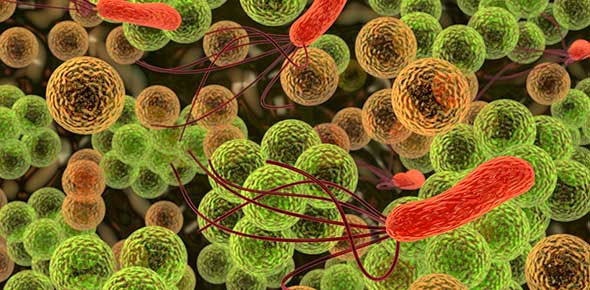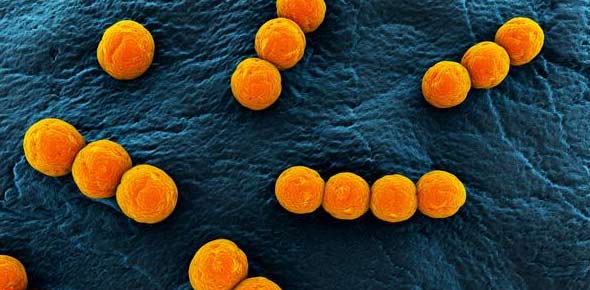Related Topics
Cards In This Set
| Front | Back |
|
What members of the Enterobacteriaceae family are normal human GI flora and can be opportunistic pathogens?
|
Citrobacter, Enterobacter, Klebsiella, Morganella, Proteus, Providencia, Serratia, Edwardsiella
|
|
What is the general colonial appearance of Enterobacteriaceae?
|
Large, gray, smooth
|
|
What appearance can Klebsiella and Enterobacter take?
|
Mucoid due to polysaccharide capsule
|
|
What additional feature can E. coli have on BAP?
|
Beta hemolysis
|
|
Which Enterobacteriaceae is known for swarming on Blood and chocolate agar?
|
Proteus
|
|
What is the colonial appearance of Citrobacter on MacConkey, HE and XLD?
|
MacConkey - resembles E. coli - lactose fermenterHE - colorlessXLD - black or red or yellow
|
|
How is Citrobacter differentiated from E. coli?
|
Citrobacter is H2S + and indole -E. coli is H2S - and indole +
|
|
What is the TSI slant reaction for Citrobacter?
|
Acid and H2S
|
|
Where is enterobacter found?
|
Soil, water, dairy products, normal GI flora
|
|
What is the appearance of enterobacter on MacConkey, HE, and XLD
|
MacConkey - non lactose fermenterHE - YellowXLD - yellow
|
|
What are the IMViC and biochemical reactions for Enterobacter?
|
H2S, methyl red, indole -VP, citrate, motility, and lactose +
|
|
What is the TSI reaction of Enterobacter?
|
Acid slant/deep with gas
|
|
Where is Klebsiella found?
|
Normal GI flora and can cause UTI and pneumonia
|
|
Who is more susceptible to Klebsiella infection?
|
Diabetics and alcoholics
|
|
What antibiotic is Klebsiella most resistant to?
|
Ampicillin
|







